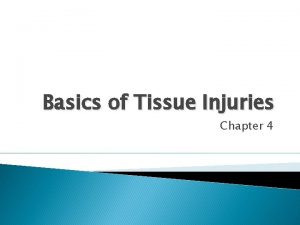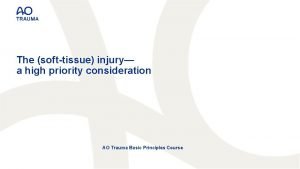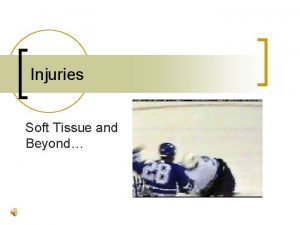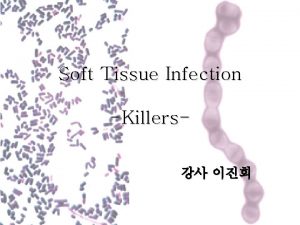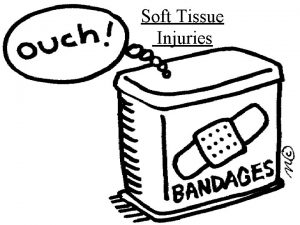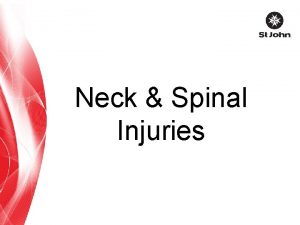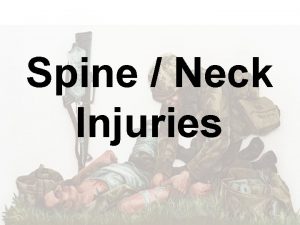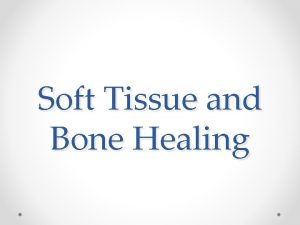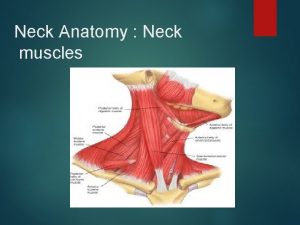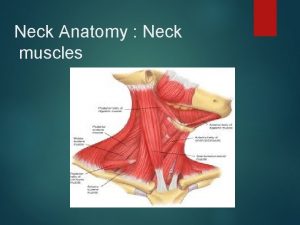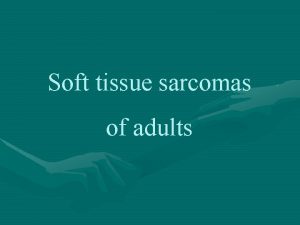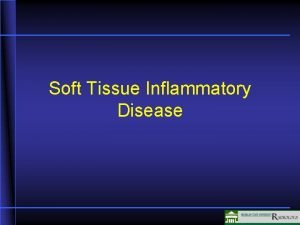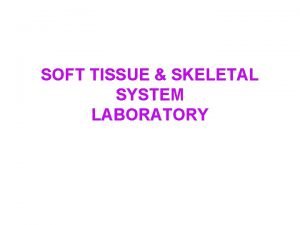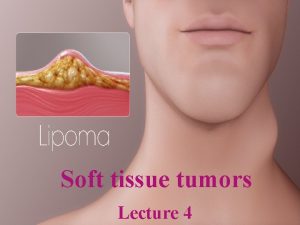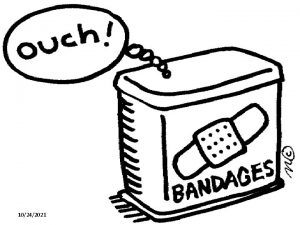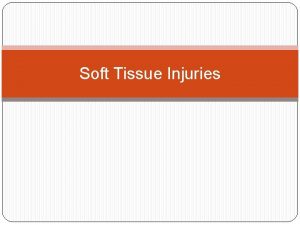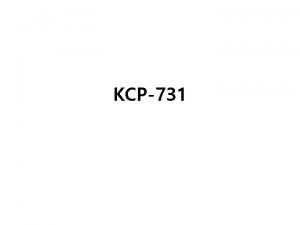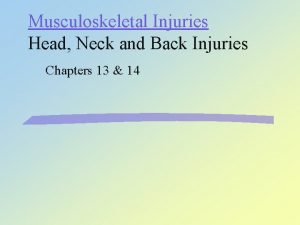Soft Tissue Injuries and Infections Content Neck injuries





















- Slides: 21

Soft Tissue Injuries and Infections

Content Ø Neck injuries Ø ? Scaphoid fracture Ø Cellulitis Ø Paronychia Ø Bites Ø Wounds and how to close them Ø Tetanus Ø Compartment syndrome

Neck strains (“whiplash”) Ø Extremely common Ø The history Ø The examination Ø The management Ø Don’t miss a fracture!

Canadian cervical spine rule Any high-risk features? Y N Any low-risk features? Maintain immobilization N Radiological imaging Y Active rotation left and right >45 degrees? Y No imaging required N

Canadian cervical spine rule – High Risk Features Ø GCS <15 Ø Focal Neurological Deficit Ø Paraesthesia in the extremities Ø Age >65 Ø Dangerous mechanism of injury The presence of any of these mandates imaging

Canadian cervical spine rule – Low Risk Features Ø Simple rear end shunt Ø Sitting position in the department Ø Ambulatory at any time since the injury Ø Delayed onset of neck pain Ø Absence of midline tenderness In the absence of high risk features, the presence of any of the above indicates that active movements may be safely assessed

Canadian cervical spine rule Ø If the patient can then rotate the neck to 45 degrees both to the left and right, no imaging is required

Ø If in doubt, ask Ø If in doubt, maintain in-line immobilisation and d/w senior re imaging Ø XR v CT Ø Do not leave people lying on spinal boards

? Scaphoid fracture Ø Risk: development AVN Ø Positive examination findings mandates further imaging even if XRs (4) are normal Ø Futura splint Ø Fracture clinic f/u for MRI

Compartment Syndrome Ø Pathophysiology Ø Causes Ø Presentation Ø Management

Soft Tissue Infections and Wound Infections

Cellulitis Ø Very common Ø 1 st line Rx: flucloxacillin Ø If requiring IV abx but well patient, consider ambulatory care (once daily iv abx)

Paronychia Ø Usually from biting nails/skin around nail Ø staph. aureus Ø Mx: abx v I&D

Bites Ø Are very prone to infection Ø Prophylactic abx (augmentin) Ø If human bite, consider need for hep B cover ? ? PEP

Ø Don’t forget that tooth fist injuries are also bites



Wound management Ø Dressings v Glue v steristrips v sutures Ø Glue and steris must stay dry Ø Suture size and time to ROS dependent on site of wound Ø Ask for advice from ENPs, seniors, nurses Ø Generally straight wounds not under tension will glue or steri even if FT. Ø Don’t suture pre tibial lacerations unless you’ve asked a senior first.

Tetanus-prone wounds include: Wounds or burns that require surgical intervention that is delayed for > six hours Ø Wounds or burns that show a significant degree of devitalised tissue or a puncture-type injury, particularly where there has been contact with soil or manure Ø Wounds containing foreign bodies Ø Compound fractures Ø Wounds or burns in patients who have systemic sepsis High risk is regarded as heavy contamination with material likely to contain tetanus spores and/or extensive devitalised tissue Ø

(http: //www. dh. gov. uk/asset. Root/04/14/13/52/04141352. pdf )

 Chapter 14 bleeding shock and soft tissue injuries
Chapter 14 bleeding shock and soft tissue injuries Chapter 4 basics of tissue injuries
Chapter 4 basics of tissue injuries A bacterial std that usually affects mucous membranes
A bacterial std that usually affects mucous membranes Understanding the mirai botnet
Understanding the mirai botnet Bone and joint infections
Bone and joint infections Methotrexate and yeast infections
Methotrexate and yeast infections Retroviruses and opportunistic infections
Retroviruses and opportunistic infections Soft gelatin capsules
Soft gelatin capsules What is esp
What is esp Opportunistic infections
Opportunistic infections Opportunistic infections
Opportunistic infections Storch infections
Storch infections Storch infections
Storch infections Neurosiphyllis
Neurosiphyllis Eye infections
Eye infections Postpartum infections
Postpartum infections Genital infections
Genital infections Genital infections
Genital infections Innate immunity first line of defense
Innate immunity first line of defense Classification of acute gingival infections
Classification of acute gingival infections Gustilo classification
Gustilo classification Hémorragie en flammèche
Hémorragie en flammèche

